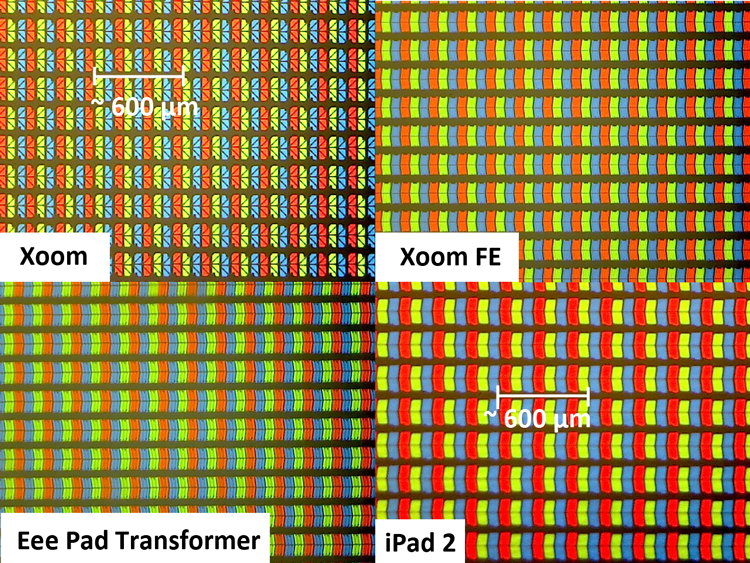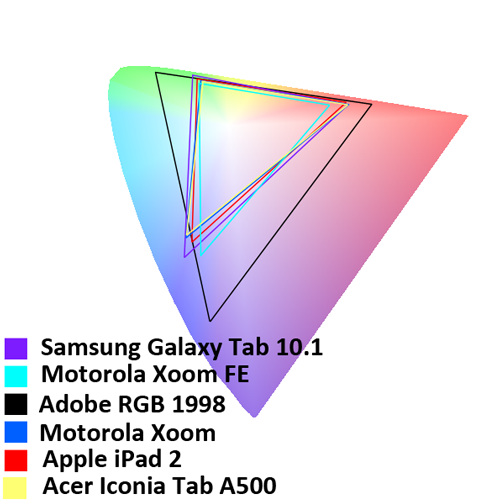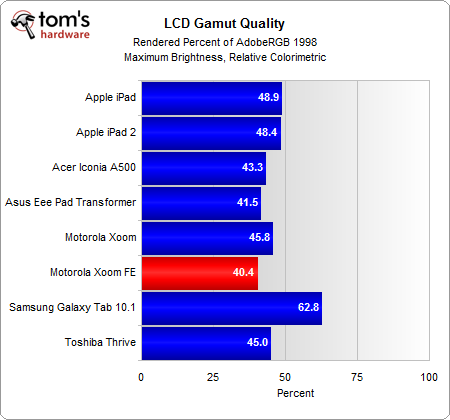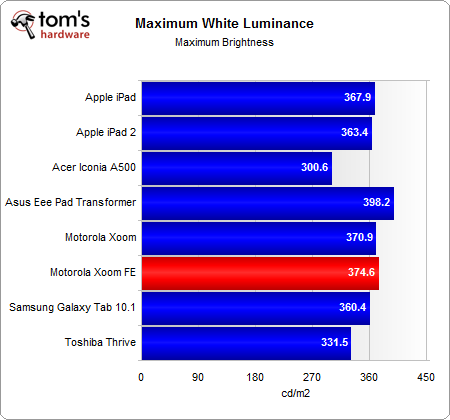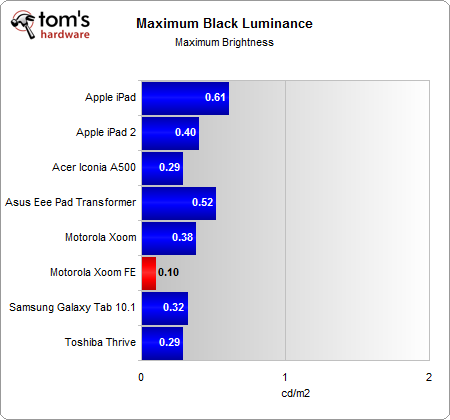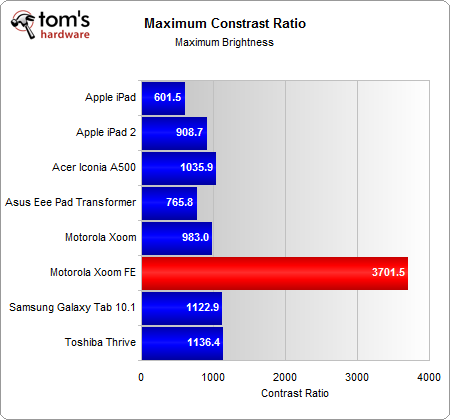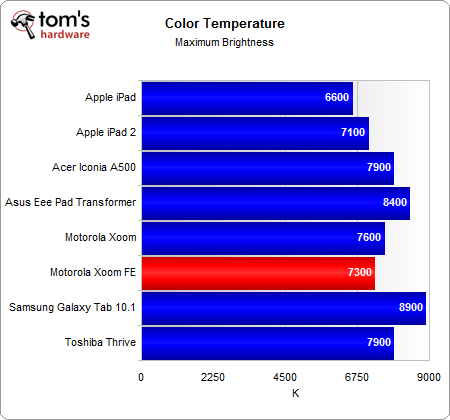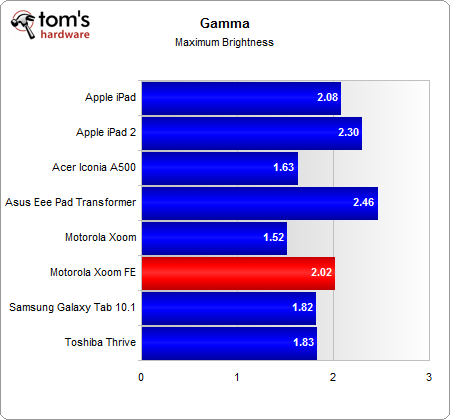Motorola's Xoom Family Edition Review: Not Just For The Kids
Display Quality: Color Gamut
The Xoom Family Edition employs an IPS panel, which is of course different from the original Xoom's VA panel. However, competing models like Asus' Eee Pad Transformer and Apple's iPad 2, both tablets that we know for certain employ IPS technology, offer better color performance.
In our opinion, the tablet's viewing angles are decent, but only horizontally. Move a few degrees in the vertical space and the image appears completely washed out.
Even though mobile operating systems don't honor ICC color profiles, native color management does occur at the hardware level. When a GPU sends 10 different hues of blue to an LCD only capable of displaying three, the subpixels display the closest matching color. So, in a way, smartphones and tablets behave as if they’re using relative colorimetric rendering. For more information, read Tom's Hardware Benchmarks Inkjet Printer Paper!
Most tablets still deliver less color quality than the cheap TN panels encountered on the desktop, so the Xoom Family Edition's performance doesn't surprise us. It's a value-oriented product, so despite its IPS panel, the Xoom Family Edition offers the least amount of color of the tablets we've tested thus far.
Overall, color gamut is extremely close to the Eee Pad Transformer, except that this new Xoom is much weaker in red production. The Galaxy Tab 10.1's Super PLS panel still sets the standard when it comes to display quality.
These gamut measurements are accompanied by a couple of caveats. First, we're disabling dynamic brightness because it doesn’t allow us to get an accurate (or reproducible) measurement of the display’s potential. Second, brightness is set to the highest value. If you don't use the same settings, your color gamut is going to look smaller than what we're showing here.
We calculate contrast ratio by dividing the maximum luminance value obtained for white and black at the center of the screen. As such, our benchmark vastly overstates the contrast ratio at 3700:1. The Xoom Family Edition's IPS panel has substantial light bleed near the edges, which means black luminance is, by default, lower towards the center. When you average the values out, the real contrast ratio falls somewhere close to 1500:1. This means the Xoom Family Edition still offers the best contrast ratio. However, that comes at the expense of a higher color gamut.
Get Tom's Hardware's best news and in-depth reviews, straight to your inbox.
The display is slightly cool at 7300 K, but it's nothing out of the ordinary. White backgrounds have a faint bluish tint, though the difference is barely noticeable thanks to a fairly even gamma.
Understand that gamma doesn't affect black or white performance, but it does affect midtones. If gamma is set too high, the midtones appear dark. If it's set too low, they're pale. Adobe, Apple, and Microsoft all recommend a gamma of 2.2. It's an arbitrary value carried over from the NTSC standard, but it was originally chosen because it allows colors to appear more natural in slightly dim environments.
Current page: Display Quality: Color Gamut
Prev Page GPU Performance: Tegra 2 Next Page Display Quality: Black And White Uniformity-
onanonanon tranfire@tanjo it has micro SDYeah, but for me, one of the best uses of a tablet would be to view photos from a digital camera and yet very few models support an SD or SDHC card.Reply -
cknobman Sorry but regardless of price after seeing just how piss poor the screen is (most notably extreme light bleed) and how long the charge times are I dont think the low price justifies its shortcomings.Reply
Heck its not uncommon to get a Transformer or A500 for $299-$349 these days which blow this tablet out of the water. -
acku Reply
1. The Transformer also has light bleed.9523631 said:Sorry but regardless of price after seeing just how piss poor the screen is (most notably extreme light bleed) and how long the charge times are I dont think the low price justifies its shortcomings.
Heck its not uncommon to get a Transformer or A500 for $299-$349 these days which blow this tablet out of the water.
2. The 299 price is because of black Friday, cyber Monday, and holiday sales. It's definitely not "normal" -
pyrrocc Grrr... can't do standard inequality of angled brackets....Reply
FYI, on the front-face cam, 1.3MP does not equal 640x480... Heck 1200x900 (4:3) = ~1MP -
slabbo A500 can be found in practically every Costco I've been in, and for $319 including a leather case.Reply -
The size specs on the Xoom and Xoom Family are not correct. Xoom Family is longer AND wider, not the other way around.Reply
